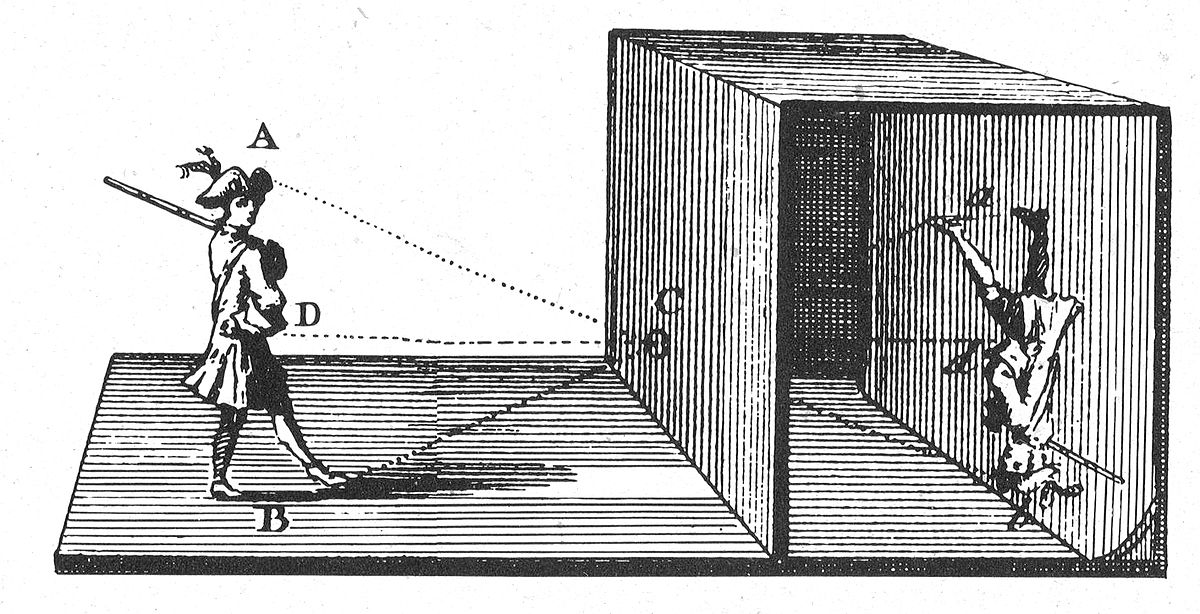One of my favourite quotes is that “some people close their eyes and all they see is darkness”. But did you know that the darkness you see has a name? When you close your eyes, it is not blackness that you see, but a particularly dark shade of grey. It’s called Eigengrau, also known as Brain Grey, and comes from the German for ‘intrinsically grey’.
By Private Detective [CC BY-SA 4.0 (https://creativecommons.org/licenses/by-sa/4.0)], from Wikimedia Commons
Eyes ever watching
The eyes do not stop working when they are closed – the eyelid is only a thin membrane and you can still easily distinguish light and movement with your eyes closed. Human vision is not as dependant on brightness than it is on contrast. So, if you close your eyes and move your hand quickly in front of your face, you will see it moving. Though the eyelids may be shut, the pupil does not close (in fact it opens wider when your eyes are closed) and therefore information is still being received. Your eyes are never really “off”, even when we are asleep they are still detecting and sending information to the brain. A sleeping brain stops ‘taking messages’ from low intensity stimuli, but if the stimuli is particularly strong or unusual the brain will pay attention, i.e. someone turning the light on in the room while you are asleep.
How do we have intrinsic light?
Inside the eye is a protein called rhodopsin. It is a light-sensitive molecule that, when stimulated by a photon, starts a process called visual transduction. This is the process that converts light information into electrical information for the brain to process. Rhodopsin is incredibly senstive to light stimulation and allows us to see in low light conditions.
For the rhodopsin molecule to send it’s electrical message to the brain, a process called isomerization occurs. The rhodopsin molecule changes structure to become a molecule known as metarhodopsin 2. Normally, isomerization has to stimulated – in the case of our rhodopsin molecule, this stimulation comes from light. Isomerization can, however, occur spontaneously (i.e. without any stimulation).
It is the spontaneous isomerization of the rhodopsin molecule that creates Eigengrau.There are about 125 million rod cells in the human eye, so even a small proportion of the molecules spontaneously reacting is enough to generate the grey effect of Eigengrau.



